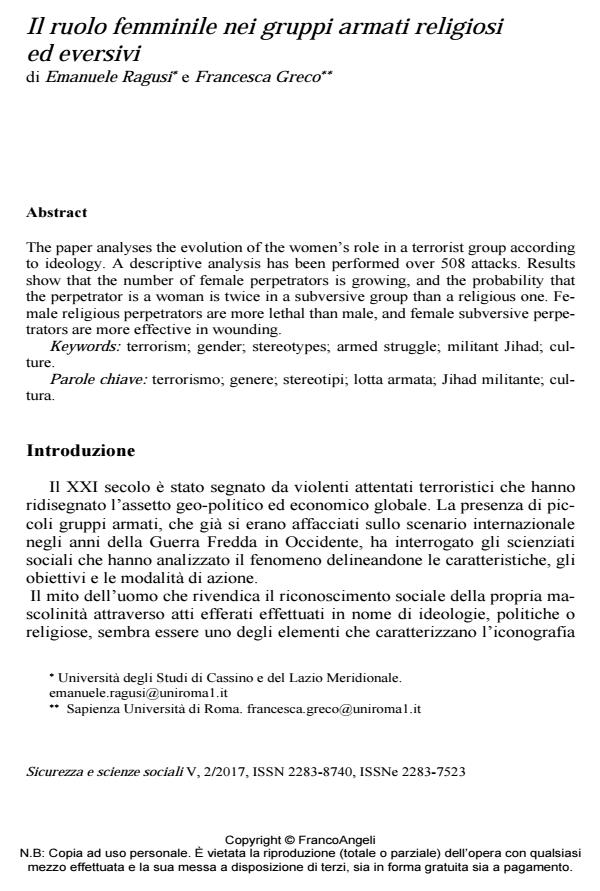Il ruolo femminile nei gruppi armati religiosi ed eversivi
Journal title SICUREZZA E SCIENZE SOCIALI
Author/s Emanuele Ragusi, Francesca Greco
Publishing Year 2017 Issue 2017/2
Language Italian Pages 17 P. 52-68 File size 222 KB
DOI 10.3280/SISS2017-002005
DOI is like a bar code for intellectual property: to have more infomation
click here
Below, you can see the article first page
If you want to buy this article in PDF format, you can do it, following the instructions to buy download credits

FrancoAngeli is member of Publishers International Linking Association, Inc (PILA), a not-for-profit association which run the CrossRef service enabling links to and from online scholarly content.
The paper analyses the evolution of the women’s role in a terrorist group according to ideology. A descriptive analysis has been performed over 508 attacks. Results show that the number of female perpetrators is growing, and the probability that the perpetrator is a woman is twice in a subversive group than a religious one. Female religious perpetrators are more lethal than male, and female subversive perpetrators are more effective in wounding.
Keywords: Terrorism; gender; stereotypes; armed struggle; militant Jihad; culture.
Emanuele Ragusi, Francesca Greco, Il ruolo femminile nei gruppi armati religiosi ed eversivi in "SICUREZZA E SCIENZE SOCIALI" 2/2017, pp 52-68, DOI: 10.3280/SISS2017-002005